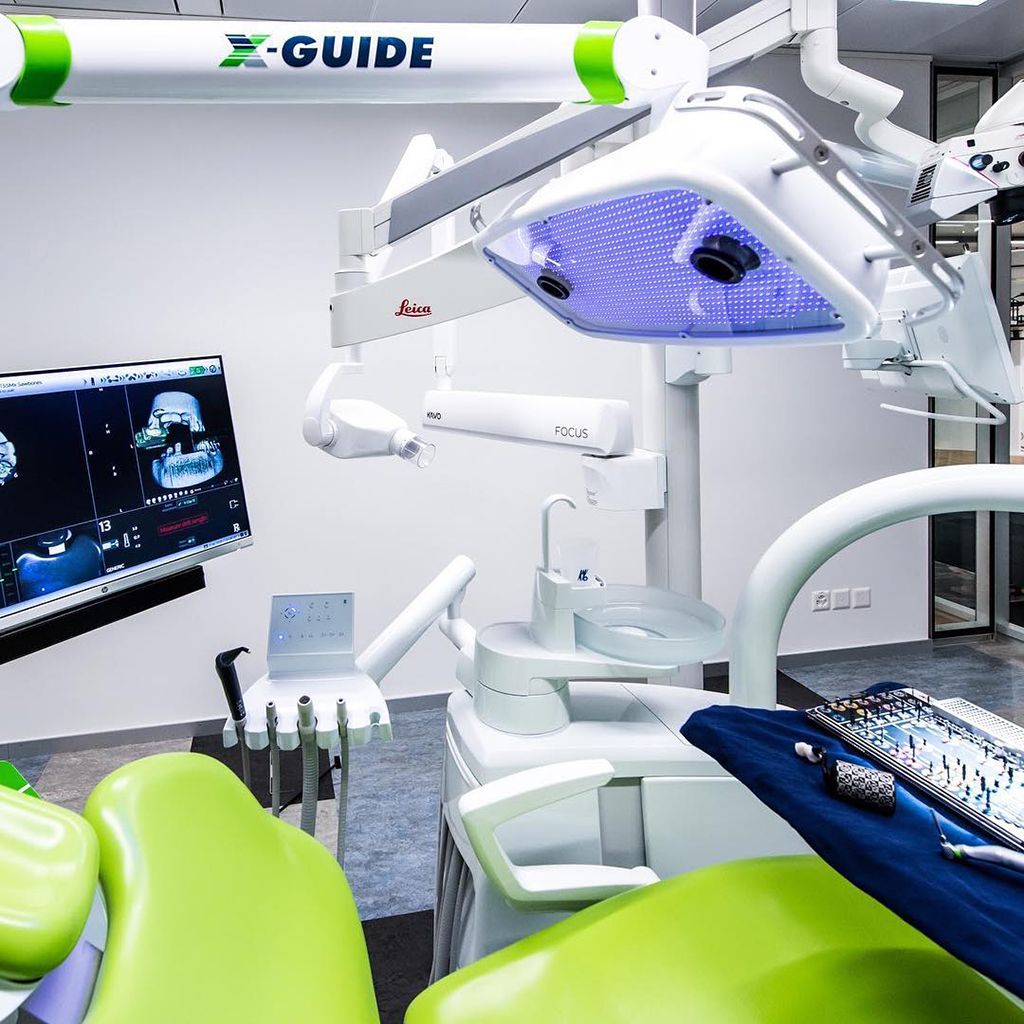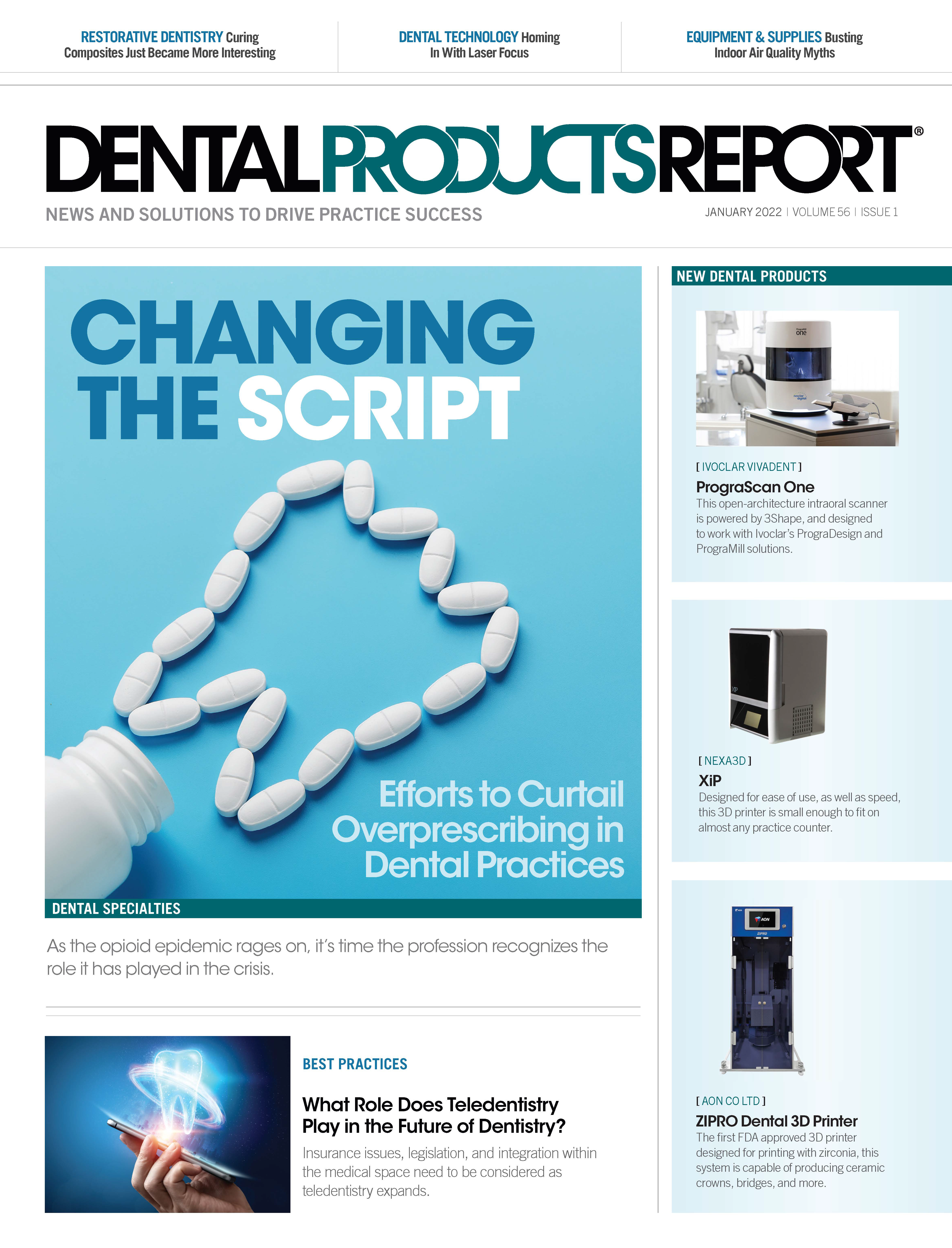X Marks the Spot
3D-navigated dental implant surgery is not a fantasy, but a powerful tool that is being put to use around the country.

The description of X-Guide™ powered by DTX Studio™ reads like something from a sci-fi novel:
X-Guide is a dynamic 3D-navigation system that can become part of a streamlined workflow for same-day guided surgery. On the day of treatment, the clinician carries out the 3D (CB)CT scan, intraoral surface scans, creates the treatment plan in DTX Studio Implant, and immediately exports it with all the planning components to X-Guide. The practice can be ready to perform 3D-navigated dental implant surgery on the very same day.
X-Guide guides the clinician through their treatment plan, providing a 360-degree, real-time view of the drill and anatomy during osteotomy and implant insertion. The ability to oversee every movement of the handpiece helps achieve a more exact implant placement compared to freehand surgery. X-Guide’s impressive tracking technology even makes it possible to control the drill when it is out of sight.
This isn’t future-state or fantasy dentistry. This powerful tool is being put to good use in practices around the country, and I jumped at the chance to talk with William Scruggs, DDS, of North Carolina Prosthodontic Specialists about why he chose X-Guide and how he’s using it to significantly improve clinical outcomes.
Lou Shuman: Why was X-Guide something you were willing to try? Was there a need, or was it more of a professional curiosity?
William Scruggs:My dad and I are both prosthodontists, and he started the practice that I now own. I’m in a unique position: I have surgical protocols and systems set up so that I can place implants myself when that’s the best option for the patient. I am our on-site restorative dentist, and we have an in-house lab.
When I finished residency in 2015, my father already had a Nobel Guide, which was the company’s guided surgery solution at the time. He was not part of the “technology generation,” so when I came in, we decided that we needed to amp up our technology because when dealing with implants, accuracy is essential. As the restorative dentist, I’m responsible for delivering the product the patient wants, and if the implant is in the wrong position surgically, that’s impossible.
In 2017, our Nobel Biocare regional manager, Henry Netter, came to me and said, “You guys would be the perfect practice for this.” I’d seen the product and thought it was cool. I wasn’t sure how it would fit into a practice; I worried it might take too long to get everything calibrated and set up. But Henry pushed me a little bit.
Today, we place 99% of implants in our practice using X-Guide, and I feel like every implant in the United States should be placed in the same way.
LS: Can you pinpoint when it was that you became a true believer in X-Guide?
WS: It’s funny; I still show my fourth case with the X-Guide. The patient was missing teeth on the lower left. When I was doing the consult, the patient opened their mouth and even with a mouth mirror, I couldn’t really see the ridge because the tongue was over the lingual side and the cheek was over the buccal side. I completed that case with 3 single-unit screw-retained crowns, and I didn’t even look in the patient’s mouth to place the implants. I tell people, “I don’t care if you’ve placed 10 or 10,000 implants, that case is pretty much impossible to execute without X-Guide.” Every time, X-Guide puts the implant exactly where you told it to. It’s almost careless not to place implants like this.
LS: Tell me about the system X-Guide integrates with the DTX software. What are the benefits?
WS: DTX Studio Implant is the implant planning software from Envista and is part of the DTX Studio suite of software. It is an open software that integrates with a growing list of brands such as DEXIS, OP3D, i-CAT, 3Shape, and Medit. I can plan a case in the software, in my office, push it to X-Guide, push continue, and export. With 3 clicks, it sends it directly through my server to the machine in the operatory with the plan up on the screen. I can literally plan a case with imported intraoral scans and the CT images in my office, 5 minutes before the surgery.
LS: Can you explain the differences in navigation for the reader?
WS: Static navigation—or static guided surgery—means you have a static template that fits in the patient’s mouth with a hole that you use, keys to make the osteotomy, to make sequentially larger holes, and then place the implant through the template. It fits on the teeth.
Dynamic navigation means you place the implant where you planned to place it with the software in real time, visualizing the drill and the implant going through the bone on the screen. Dynamic means it is guided, but you can see where you are in relation to everything you can see on the CT scan.
Then there are laser-guided procedures that work like triangulation GPS with your cell phone, using 3 points. With X-Guide, you have 2 cameras overhead that act like satellites. All it needs to figure out where you are is know where the patient and the handpiece are.
On the opposite side of their mouth from the implant, the patient wears a device called an X-Clip, which has a barcode on it. The handpiece also has a barcode on it. Once it’s calibrated, the 2 cameras know where the patient and the handpiece are. You calibrate it to tell it how long the drill is, and at that point, it knows where the tip of that drill is in relation to everything in the patient’s mouth.
LS: It’s all planned for you—height, depth, angulation, everything. Is that how it works?
WS: With a static guide, you have a hole the same exact size as the drill, so you cannot deviate from that at all. If you need it a little deeper, you have to throw it in the trash. It will not allow you to do anything other than drill a hole. You control the drill, but it tells you exactly where the drill needs to be.
With X-Guide, you can really do anything you want. It’s just telling you where you said you wanted it in the software. If you’re in the mouth and decide that you want to move it a millimeter mesial, you can go in the software—in real time—move the implant a millimeter mesial, and it will guide you to the new location. You can change on the fly, which is a huge advantage.
The other significant advantage is that the X-Guide is the only device that allows me to do same-day guided surgery. If a patient walks in, asks, “Can you do it today?” and I happen to have time in my schedule, I can gather the CT and all the other information, plan the procedure, and perform surgery about 30 minutes later. That’s incredible.
LS: You have made a strong case for X-Guide. Are there no drawbacks at all?
WS: Like all new technology, it does take the work of setting up systems and calibrations to make it as efficient as it is for us today. To make it seamless, you have to have a team that is trained and able to understand the process from the beginning.
I get referrals because of the equipment. Going into every surgery, I know that the implant is going where I planned it. I’m not going to have remakes and lose money on the restorative side. I’ve certainly placed more implants because of X-Guide. That’s how I measure ROI.

ACTIVA BioACTIVE Bulk Flow Marks Pulpdent’s First Major Product Release in 4 Years
December 12th 2024Next-generation bulk-fill dental restorative raises the standard of care for bulk-fill procedures by providing natural remineralization support, while also overcoming current bulk-fill limitations.